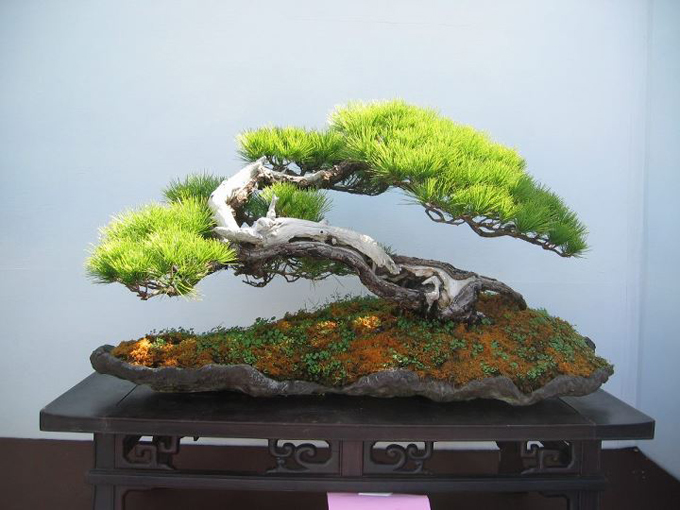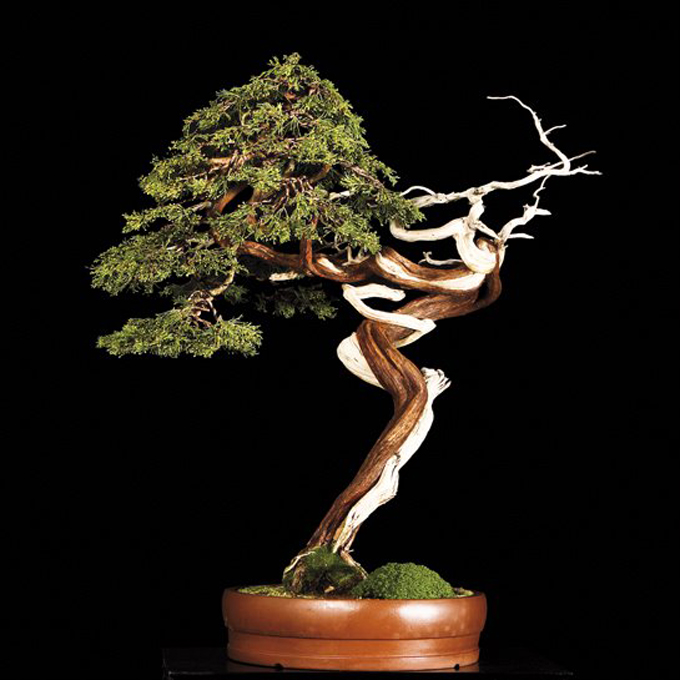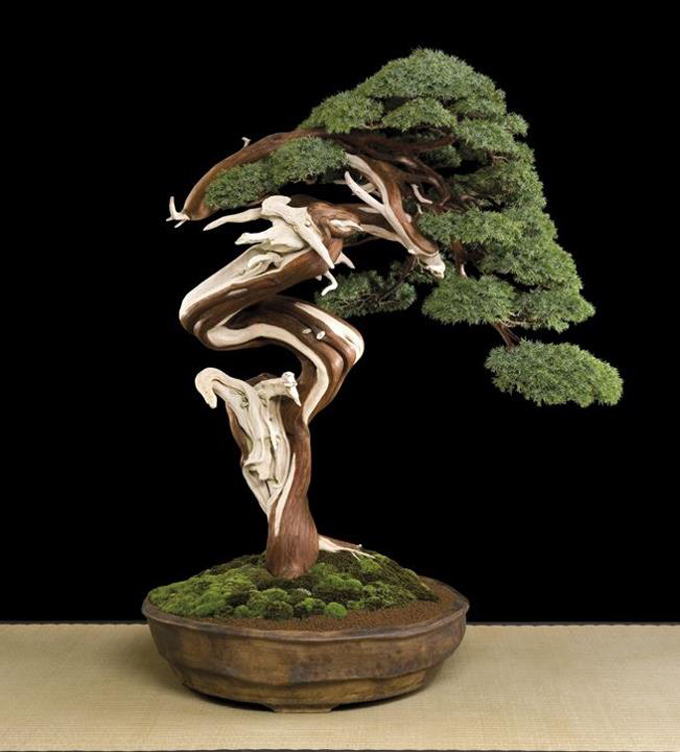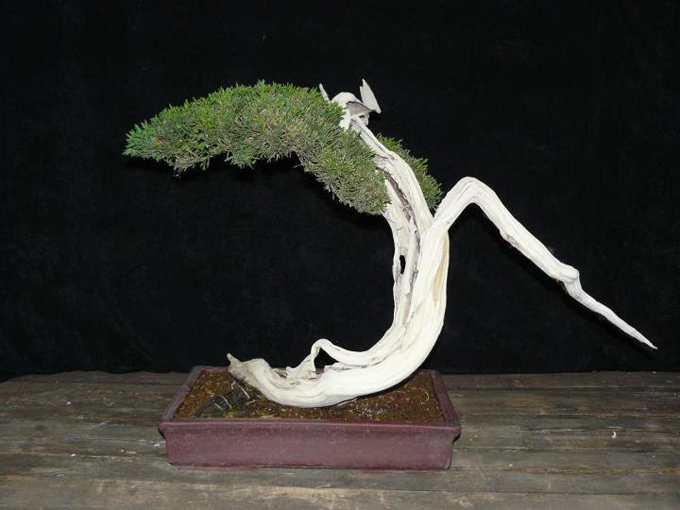 Unusual, yes. Eccentric, somewhat. Sweet, definitely! The compressed quality (like a very large foot stepped on it) and the way the foliage sort of clings to the trunk, make for an unusual bonsai. Even the pot and the reddish brown ground cover are different. But aside from its more eccentric qualities, there’s that wonderful trunk. The image is from Joko Sulistianto’s facebook photos, as are all the images in this post. I don’t know who the tree belongs too (ditto on the others).
Unusual, yes. Eccentric, somewhat. Sweet, definitely! The compressed quality (like a very large foot stepped on it) and the way the foliage sort of clings to the trunk, make for an unusual bonsai. Even the pot and the reddish brown ground cover are different. But aside from its more eccentric qualities, there’s that wonderful trunk. The image is from Joko Sulistianto’s facebook photos, as are all the images in this post. I don’t know who the tree belongs too (ditto on the others).
Pushing invisible boundaries
Way back in the recesses of time (2009 & 2010) we featured a whole series of posts titled ‘eccentric bonsai.’ Lately, we’ve backed off a bit. I think this is partly because unusual bonsai are more common as people from around the world are breaking away from more formulaic approaches to bonsai and pushing the invisible boundaries, and then using the internet to share what they and others are doing. Not to say that people weren’t breaking away and pushing boundaries in earlier times, just that, like with so many things, there’s a rapid acceleration going on.
 There was a time twenty years ago or so, when this bujin would have been considered unusual, even eccentric. Now trees that are this wildly expressive are popping up all over the place.
There was a time twenty years ago or so, when this bujin would have been considered unusual, even eccentric. Now trees that are this wildly expressive are popping up all over the place.
 Just like the tree above, bonsai like this are no longer that unusual. The question that this one begs, is the issue of naturalistic bonsai versus more stylized bonsai.
Just like the tree above, bonsai like this are no longer that unusual. The question that this one begs, is the issue of naturalistic bonsai versus more stylized bonsai.
 Too eccentric? Ugly? I’ll let you be the judge.
Too eccentric? Ugly? I’ll let you be the judge.
All the photos in this post are from here.
….it`s so exotic …..all of them …I do love it , and for me it`s the real bonsai art .
Wayne, once again you have provided more inspiration to look out of the box. The 1st tree I would love to have in my collection (the matching of the pot is so incredibly appropriate). The last tree looks like it’s about to take off and fly!
Thanks,
O
Wayne,
The pine on the slab is a Pinus morrisonicola ‘Hayata’ or Taiwan White Pine. I forget who the owner is, but I know for a fact that it does not belong to Joko Sulistianto. This tree won one of the tree top awards in the Third Taiwanese Pine Association Exhibition and has been featured in the Hwa Fong (Taiwanese National Bonsai Style Show) and the Taiwan Bonsai Creators Exhibition and Competition.
On another note, this specimen is farm grown (not yamadori) and the dead portions created by the artist.
Kind regards,
Jose Luis
Thanks Roberto.
Yes, no doubt in my mind that over the last few years an expanding group of daring artists have pushed the notions of what bonsai is and can be.
Thanks Owen,
Agreed and as always, I enjoy hearing from you.
Thanks as always Jose Luis,
Your comments enrich this blog.
I am always surprised to see how wild and natural looking Taiwanese field grown stock is. Hats off to those highly skilled Taiwanese artists.